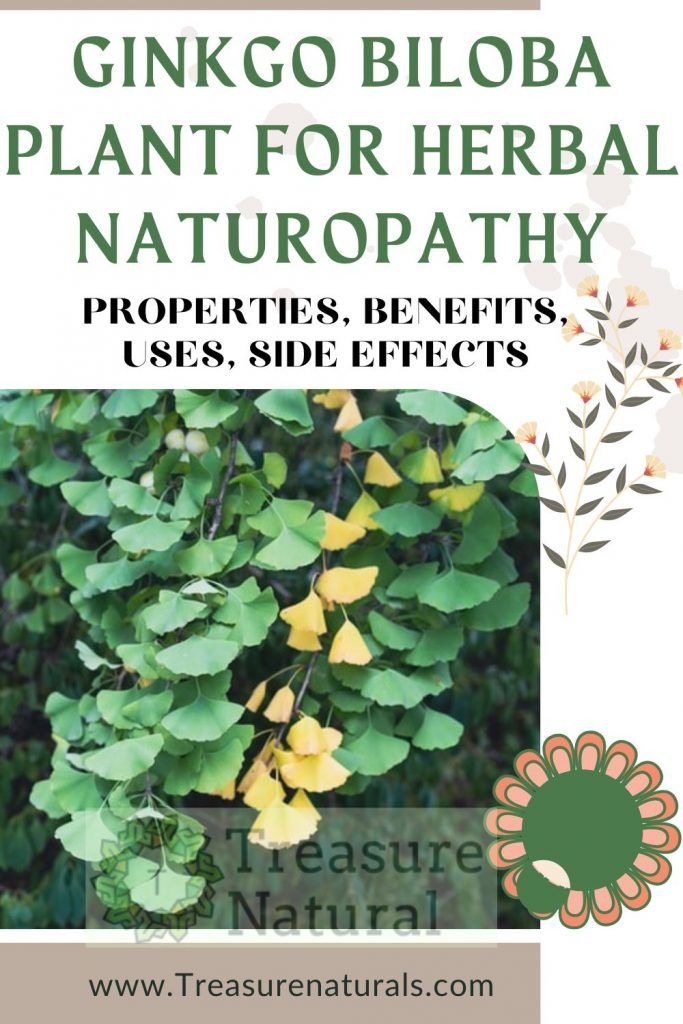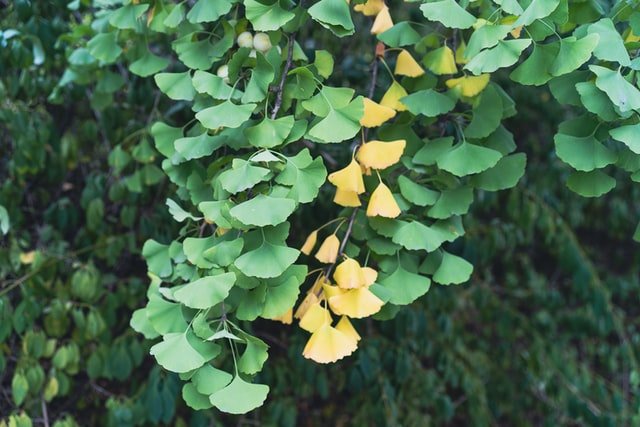
Ginkgo (Ginkgo biloba) is a plant from the Ginkgoaceae family. In addition to being useful against diabetes and allergies, it is also used to combat Alzheimer’s disease. Let’s find out better.
Properties of ginkgo biloba
Ginkgo biloba leaves contain terpenes (ginkgolide B) which block lipid peroxidation, which is involved in platelet aggregation. These active ingredients, in fact, inhibit the platelet activation factor (PAF), preventing the formation of thrombus in the blood vessels; and decrease capillary permeability, improving tissue spraying.
Polyphenols and flavonoids (ginketol, isiginketol, bilabetol, ginkolide) act on cell membranes, stabilizing them and counteracting the formation of free radicals. This antiplatelet property makes it particularly suitable for avoiding the rejection of transplanted organs, useful under strict medical supervision in case of emboli, responsible for heart attacks and some apoplexy.
Particularly known for its activity on venous, arterial and capillary circulation, the plant is also widely used as a blood thinner, because it decreases its viscosity, in the prevention of thrombus and heart attacks. Due to this property, ginkgo also helps the oxygenation and nourishment of the tissues, with beneficial effects, in particular, on the blood circulation of the brain tissues.
In fact, due to its ability to promote a correct distribution of oxygen and glucose to the brain, it increases mental acuity, concentration, short-term memory, and cognitive faculties: it is particularly suitable for students. Numerous researches have also shown that the use of ginkgo counteracts the phenomena of atherosclerosis in the elderly and slows the progression of Alzheimer’s disease.
Its active ingredients also make it a powerful remedy against allergies: it is a vasodilator of the arteries, while in the veins it has a vasoconstrictive action, therefore it is recommended in asthma attacks. Furthermore, favoring a more efficient peripheral circulation, it is recommended in the treatment of chilblains on the extremities, due to the cold; and it is also used in cases of tinnitus (ringing in the ears) dizziness, intermittent pain in the legs, and headaches.
The vasoprotective property is given by the ability of the plant to improve the tone and elasticity of the walls of veins, arteries and capillaries, and therefore it is recommended in the treatment of neuropathies caused by diabetes, in macular degeneration of the retina, and other circulatory problems, such as hemorrhoids, varices and capillary fragility.
Finally, ginkgo biloba is considered a scavenger of free radicals. This feature makes it an excellent antioxidant, because it activates cellular metabolism and protects the brain and nervous system from damage caused by free radicals, and this can help counteract the effects of aging.
How to use
INFUSION: 1 level spoonful of ginkgo leaves, 1 cup of water
Pour the leaves into the boiling water and turn off the heat. Cover and leave to infuse for 10 min. Filter the infusion and drink it between meals to take advantage of the anti-inflammatory action for the benefit of the circulatory system.
Mother tincture of ginkgo : 30-40 gc to be taken in the morning
800- mg dry extract in tablets or capsules in the morning
Contraindications of gingko
Contraindicated in pregnancy and lactation, administer with caution in patients taking anticoagulants, blood thinners and antiplatelet agents, MAO inhibitors and NSAIDs or acetylsalicylic acid at the same time.
During the intake period it is advisable to avoid exposure to the sun and / or tanning lamps, because it is photosensitizing.
Description of the plant
Tree (30-40 m.) With large crown, pyramidal in young plants and oval in older specimens. The bark is smooth and silver in color in young plants, it becomes brownish-gray to dark brown in color and has a cracked texture in mature specimens.
It has deciduous leaves, long petiolate with a light green leaf, which in autumn take on a very decorative yellow color, with a typical fan shape, bilobed.
Ginkgo is a gymnosperm and for this reason it does not have flowers as we usually understand them, but has structures defined as cones or strobili or, as in this case, modified scales. It is a dioecious plant that is, bearing separate male and female fertile structures on different plants. The fruits (of which the embryo is edible after roasting) are covered with a fleshy, pruinose yellow color, with an unpleasant smell when ripe.
The habitat of ginkgo
It is native to China, where fossils dating back to the Mesozoic era have been found, and to Japan. Today ginkgo biloba is widespread in the temperate areas of the planet, as an ornamental plant for parks and city avenues; for this very purpose it was introduced in Europe in the mid-18th century.
Historical notes

The term “ginkgo” comes from the Japanese Yin-kuo, which means “golden apricot”; “biloba” instead refers to the shape of the leaf, with 2 lobes. It is considered a legendary tree more than 250 million years old and which has withstood the worst pollution of the twentieth century and in particular the remnants of the Hiroshima atomic bomb.
Ginkgo, in addition to being considered the oldest tree on Earth, is also one of the longest -lived, since it can reach 1000 years. It is therefore not surprising that in Japan it is considered a sacred tree, often present in the vicinity of temples. For this reason it is believed that the species has been preserved thanks to the cultivation carried out by Chinese monks to decorate places of worship.






